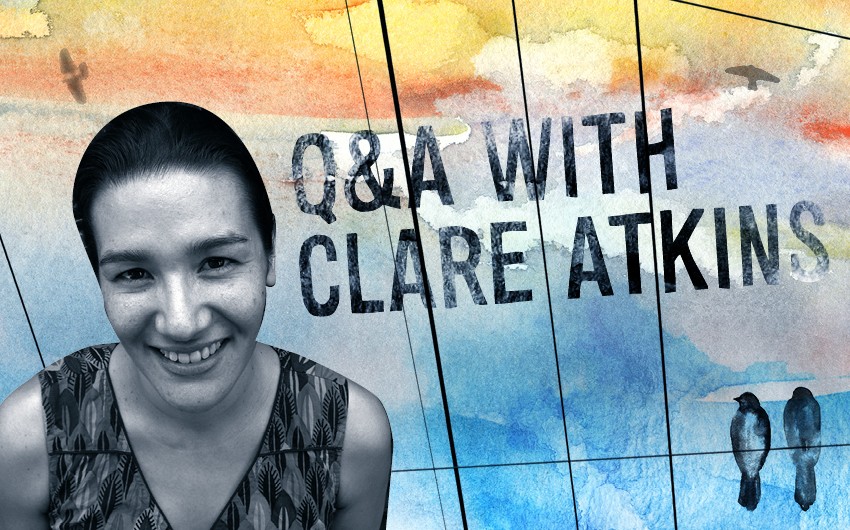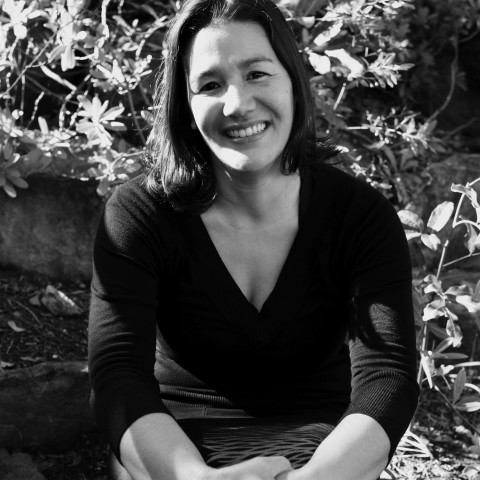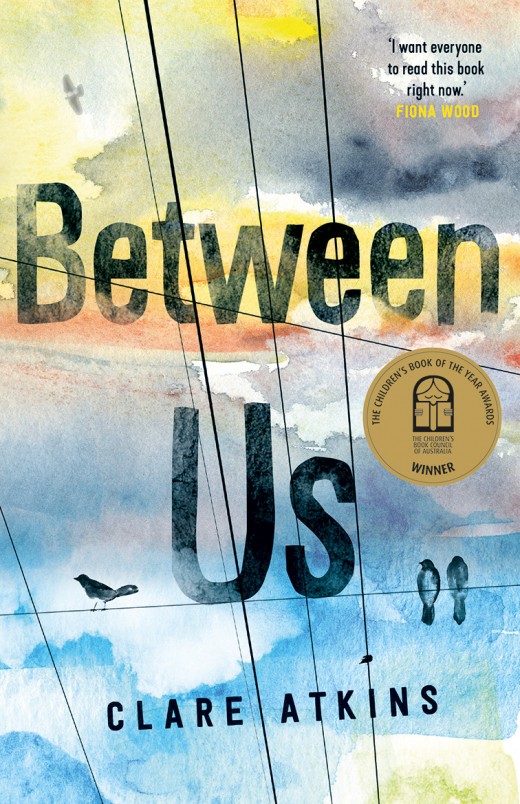News

News > Interview
Between Us Q&A with Clare Atkins #LoveOzYA
‘I was determined that Between Us would not only be the story of a modern day asylum seeker, but one that incorporates the rich and complex history of multiculturalism of Australia, and our changing attitudes towards migrants and refugees.’ —Clare Atkins
Between Us tells the story of Iranian asylum seeker Ana. She is kept at Wickham Point Detention Centre with her mother and younger brother. During the day Ana is allowed to attend the local high school. There she meets Jono, an Australian-Vietnamese boy whose parents have split up. As the relationship between Ana and Jono deepens, a riot at the detention centre breaks out. Its repercussions will be far reaching for Ana and Jono.
What made you want to write a teenage love story centred around the plight of asylum seekers in detention?
Well, firstly, who doesn’t love a love story? But, more seriously, my main desire was to use a personal, character driven story to explore Australia’s changing attitudes to immigration, asylum seekers and multiculturalism. My father is Vietnamese and my mother is Australian. I’ve always felt like I’ve grown up in between cultures, and it’s these in-between areas that I was eager to explore. Jono and Ana both inhabit that space. Jono is the son of a Vietnamese migrant, but sees himself as completely Australian. Ana’s life is in limbo; she is neither really living in Australia nor free from her memories of Iran. My interest in asylum seekers comes from volunteering to coordinate children’s activities at Villawood Detention Centre in my early twenties, and more recently visiting people at Wickham Point. Some of my extended Vietnamese family also arrived at Australia by boat. I was interested to research the very different reception those first boat arrivals received compared to today, and tried to weave that sense of history into the novel. Jono and Ana, and Jono’s father Kenny, who works in the detention centre, felt like the perfect characters to bring the story to life.
The novel presents a very realistic picture of life in detention, especially all the small rules and regulations, many which seem over the top. How did you do the research for the story?
I did extensive research over several years, talking to asylum seekers, settlement workers, government employees, security guards, teachers, settled refugees and many more. This was challenging at times because of the Border Force Act, which prevents people working with asylum seekers from speaking out about the conditions they witness in detention centres. There were multiple meetings in cafes in which interviewees said: ‘I’m happy to talk but I don’t want my name anywhere near this.’ Local organisations such as the Darwin Asylum Seeker Support and Advocacy Network (DASSAN) and the Melaleuca Refugee Centre were a huge help in making sure I got the details right. I was also very lucky to work with two key consultants – Natasha Blucher, a refugee advocate who has worked closely with asylum seekers for many years, and Shokufeh Kavani, an Iranian writer and artist.
Australia’s detention regime remains a very controversial issue. Your book discusses the personal struggles that people go through. Did writing on such a sensitive issue, where real lives are at stake, make the process difficult? Did you feel a bit of a weight on your shoulders?
At times it did feel like a huge weight. There was the temptation to try to make the story lighter. I adore Eleanor and Park by Rainbow Rowell and initially thought Between Us might have that kind of playful tone. But the more research I did the more that approach felt dishonest for Jono and Ana’s story. Of course, there is still joy and connection and fun, and the characters are trying to live normal teenage lives, but it became clear I needed to be honest about the other side of things too. Reading A Little Life and hearing Hanya Yanigihara’s closing speech to the 2016 Sydney Writers’ Festival was a real turning point for me. She talked about the responsibility of authors to show the dark as well as the light. And once I fully committed to that the story came together and felt real and honest, and the process became a little easier.
Between Us is a novel that tries to change hearts and minds on a fraught issue. Are you hopeful that the situation will improve for people in detention in the future, despite all the current difficulties
I wish I could say I’m hopeful but unfortunately I’m not. Australia’s treatment of asylum seekers often feels like one step forwards, two steps back. The political ground and rules are constantly shifting, and it’s all too easy to forget that the laws governing asylum seekers are not just words on paper, they are decisions that affect real people’s lives. I hope Between Us will allow readers to experience life behind the barbed wire fences - to have an intimate, if vicarious, experience of what as asylum seeker’s life may be like. The novel is fiction - it isn’t didactic and I don’t have any answers or solutions. But the one thing that was evident to me in Ana’s story, and the true stories of the many people still in detention today, is that our current approach is inhumane. There must be a better way forward.
Share this post
About the author
Clare Atkins’ debut novel, Nona & Me, won the 2016 Book of the Year in the NT Literary Awards, and was shortlisted for the 2015 Children’s Book Council of Australia Awards, longlisted for the 2015 Inky Awards, and highly commended for the 2015 Victorian Premier’s Literary Awards. She has worked as a scriptwriter for many successful television series, including All Saints and Home and Away.
Author photo by Beth Taylor
More about Clare Atkins




